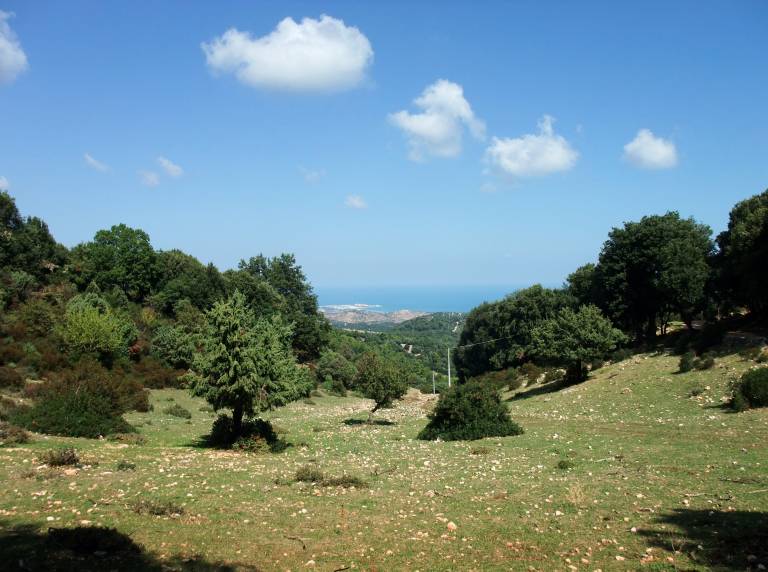Palynological research sheds light on the age of Grotta Romanelli, Apulia, Italy
6 December 2021
Pollen was preserved in Late Pleistocene/Early Holocene deposits of Grotta Romanelli. Olea pollen constraints the deposition of Terre rosse to the Eemian (123,000 years ago). Steppe herbs and rare arboreal pollen in Terre brune mark the Lateglacial.

Pollen analyses have been carried out on the infilling deposits of Grotta Romanelli (Apulia, Italy), a reference site for the Middle and Upper Palaeolithic of Italy. The analysis focused on Terre rosse, a fine unit till now ascribed to an interstadial phase following the Würm acme, and on the uppermost unit (Terre brune), recently dated to the latest Late Pleistocene-Early Holocene. Despite the diffuse barrenness and low pollen concentration of many levels, pollen data from Grotta Romanelli gives insights into the palaeoenvironmental setting of the deposits and their chronological attribution. The presence of Olea in all levels of Terre rosse strongly suggests their attribution to the Last Interglacial (Eemian), during which this plant was diffused in the Mediterranean area. The Terre brune deposition occurred when the environment was open, with rare trees and shrubs and prevailing steppe elements. This association reflects the climatic conditions of the Lateglacial, with evidence of both the warm interstadial Bølling/Allerød and the cold stadial Younger Dryas. Mediterranean, mesophilous and riparian arboreal elements are present, especially in the Early Holocene levels. Comparison with modern pollen material allowed some fossil grains, found in high amounts and in clusters, to be tentatively ascribed to the species Crithmum maritimum (Apiaceae), Muscari comosum and to Asparagus maritimus/Ornithogalum (Asparagaceae). The significant occurrence of such entomophilous plants reveals differential transportation inside the cave and, since most of them are edible and/or have medicinal properties, suggests an intentional introduction and possible use during time, by both Neanderthals and modern humans.
Elda Russo, Ermollia Alessia Masib, Cristiano Vignola, Halinka Di Lorenzo, Lucrezia Masci, Fabio Bona, Luca Forti, Giuseppe Lembo, Ilari Mazzini, Beniamino Mecozzi, Brunella Muttillo, Pierluigi Pieruccini, Raffaele Sardella, Laura Sadori
 Close
Close

